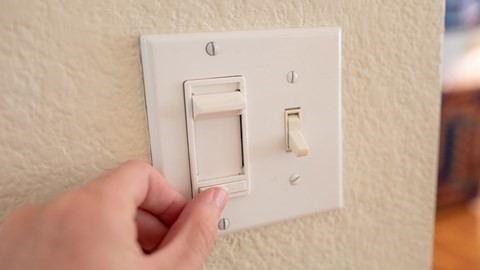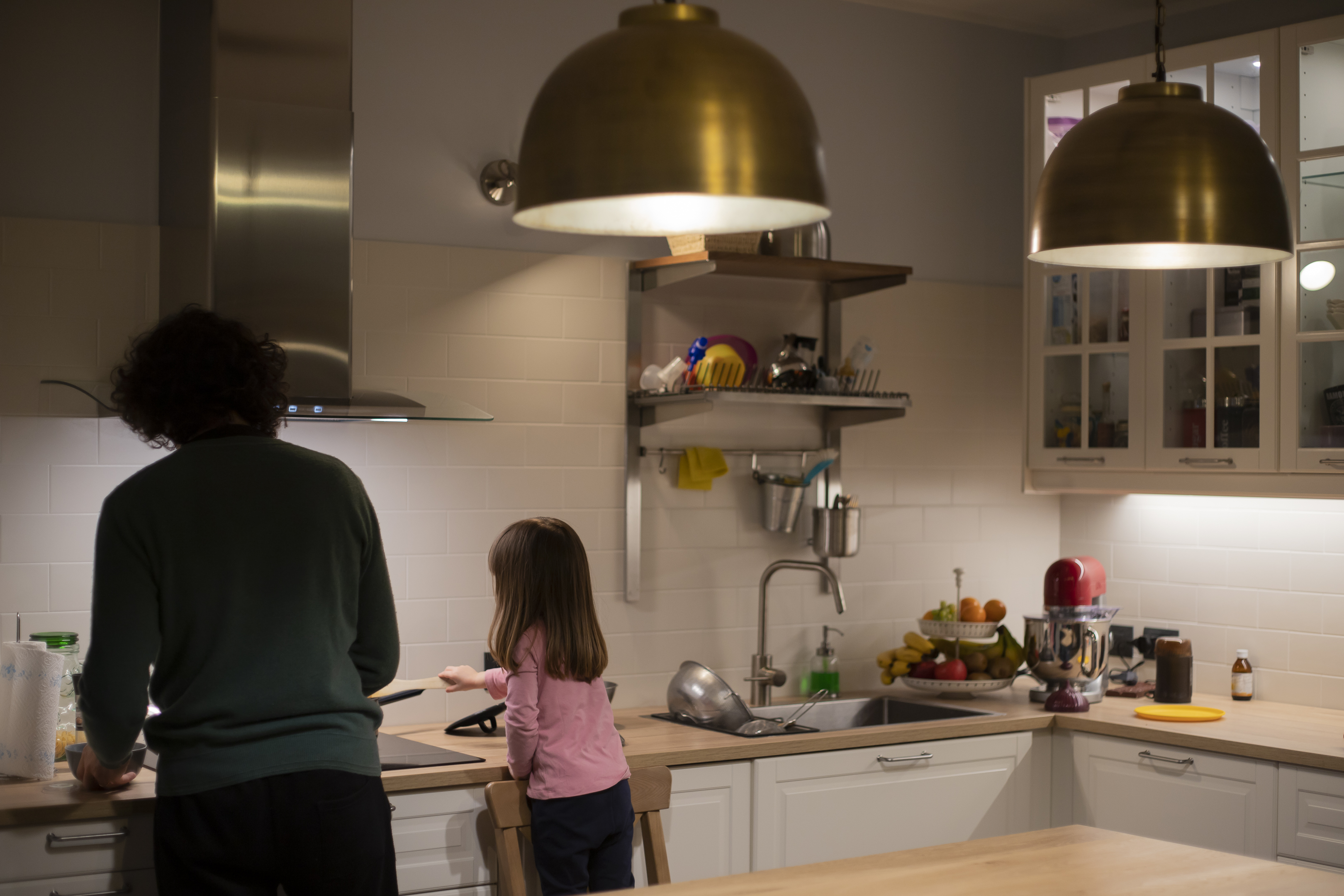Fall in the District means colorful leaves, cozy cups of pumpkin spice lattes, and shorter days. This shortage of sunlight, in turn, means your lights are on longer, and this could start to add up on your utility bills. With daylight savings time ending on November 6th (roll back those clocks!), we’ve gathered some tips on lighting best practices this season.
.png)
Use outdoor lighting only when needed
Outdoor lighting is a great way to help keep your home safe and secure, especially as nights get longer. But leaving exterior lights on over-night can be costly. You can try to make a habit of turning off outdoor lights before going to bed at night, but another solution could be to invest in smart LED lights that connect to an app on your phone. You can set a timer that automatically controls the light fixtures.
Consider solar lighting fixtures for the outside of your home. Outdoor lighting products with photocells or photo sensors allow lights to come on only when the sun is down. Lucky for you, DCSEU-sponsored LED lights are available at a discount for the remainder of the year.
District renters and property owners also apply for a rebate on home security cameras through the Private Security Camera Rebate Program. Eligible residents can get a rebate that covers the cost of the cameras, up to $200 each or more than one camera, up to $500 for residential properties and up to $750 for commercial properties.

Dim the lights to maximize energy savings
Dimmers let you adjust the feel of a room for mood or activity. Dimmers reduce power to the lighting source or bulb, so they save energy and can extend bulb life. You can choose full light when you are active; choose midlevel light for movie and popcorn time. Lower lights in the later evening hours to transition to bedtime.
ENERGY STAR dimmable LED bulbs are already very efficient, so investing in a dimmer can maximize your energy savings. If your current dimmer switches are more than 5 years old, you will need to replace them with ones that are compatible with LED technology. Older dimmer switches work well with incandescent lightbulbs, but when used with dimmable LED lightbulbs, they can cause the light to flicker instead of dim gradually. Remember, not all LED bulbs are dimmable. Look on the package to confirm.
An electrician can easily replace your existing switches or dimmers with products that work with newer lightbulb technology. It can be a fairly straightforward do-it-yourself project as well.
Switch to LED bulbs in high use places
Switch to ENERGY STAR certified LED bulbs . Switch out the lights you use the most to prepare for darker nights this fall and winter. If you don’t have the resources or time to replace all the bulbs in your home, you’ll enjoy savings from switching one ENERGY STAR LED bulb. This single step will be one of the best you can take to save money on lighting.
Advancements in light-emitting diode (LED) technology and falling prices have made LEDs the light bulb of choice in homes. ENERGY STAR LEDs are energy efficient and have light color characteristics like incandescent light bulbs.

Start in the kitchen
Fall and winter are popular times for cooking and baking in the kitchen. If that’s true in your home, then it’s a great place to replace incandescent lightbulbs with ENERGY STAR LEDs. LEDs last longer than other bulbs, so they’re perfect for hard-to-reach lights that are frequently left on. You will climb your ladder less often to replace them and save money on energy.
Once you add energy efficient lighting to your home, the only thing left to do is grab a good book, make a hot latte, and cozy up in a blanket knowing these small changes made a big impact in reducing green house gas emissions.